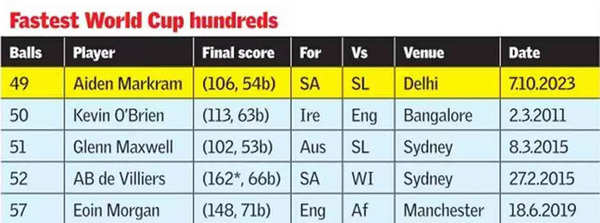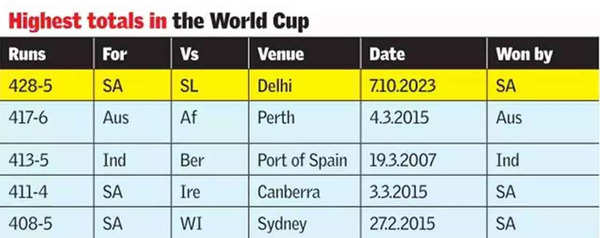
[ad_1]
This South African team brought the tournament alive with their emphatic cricket and declared that they meant business over the next 45 days. “The way batters are playing nowadays, you wouldn’t be surprised if that record is broken in this competition itself,” Markram said of his record of scoring the fastest hundred in World Cup history.

This bunch realizes that ODI cricket no longer offers breathing space. With pitches usually flat for batting, setting up a game is no more a grind. Constructing an ODI innings has become close to being an extension of T20s. The difference between a ‘finisher’ and an ‘anchor’ has blurred over the years. “I think when you get off to really good starts like that, it’s on the next guy to maintain that intensity if not increase it. We might have luck now and then the pitch might be really tough and then you certainly won’t be playing T20 cricket’ necessarily on a wicket that’s tough,” Markram explained.
Rassie van der Dussen, too, was quite bullish about how his team wasn’t going to sit back in the middle order. “It is not about trying to get yourself in. It’s more about having your blueprint for boundary options and have a right intent. For us, the key is to look for boundaries no matter what is the stage,” was Rassie’s curt response to a query about planning the middle-overs in an ODI.

It’s not just the batting. The South African bowling is also all about attacking when the opposition batters are on a roll. Young fast bowler Gerald Coetzee spoke about looking to minimize the damage but it came with a rider: “It’s not about bowling restrictive lines. It’s always looking to take wickets. Wickets will win you games. Sometimes you may go for a few extra runs but you have to look for wickets at all times.”
This South African team has signaled that they have come in with intent and they are going to show the way ODI cricket is going to be played during the World Cup.

[ad_2]
Source link